-
 Bitcoin
Bitcoin $113900
-1.39% -
 Ethereum
Ethereum $3517
-4.15% -
 XRP
XRP $3.009
1.59% -
 Tether USDt
Tether USDt $0.9997
-0.04% -
 BNB
BNB $766.8
-1.41% -
 Solana
Solana $164.6
-2.38% -
 USDC
USDC $0.9998
-0.02% -
 TRON
TRON $0.3277
0.65% -
 Dogecoin
Dogecoin $0.2023
-1.67% -
 Cardano
Cardano $0.7246
0.05% -
 Hyperliquid
Hyperliquid $38.27
-4.77% -
 Sui
Sui $3.528
-0.52% -
 Stellar
Stellar $0.3890
-0.73% -
 Chainlink
Chainlink $16.16
-2.69% -
 Bitcoin Cash
Bitcoin Cash $539.9
-4.38% -
 Hedera
Hedera $0.2425
-2.00% -
 Avalanche
Avalanche $21.71
-0.97% -
 Toncoin
Toncoin $3.662
5.73% -
 Ethena USDe
Ethena USDe $1.000
-0.02% -
 UNUS SED LEO
UNUS SED LEO $8.964
0.35% -
 Litecoin
Litecoin $107.7
2.33% -
 Shiba Inu
Shiba Inu $0.00001223
-0.40% -
 Polkadot
Polkadot $3.617
-0.97% -
 Uniswap
Uniswap $9.052
-2.49% -
 Monero
Monero $295.1
-3.79% -
 Dai
Dai $0.9999
0.00% -
 Bitget Token
Bitget Token $4.315
-1.85% -
 Pepe
Pepe $0.00001060
0.11% -
 Cronos
Cronos $0.1342
-2.72% -
 Aave
Aave $256.0
-0.87%
Is the three-line blossom pattern really effective? Where is the best buying point?
The three-line blossom pattern is a candlestick formation signaling a potential downtrend reversal, often used by crypto traders to spot buying opportunities in assets like Bitcoin and Ethereum.
Jun 17, 2025 at 10:56 am
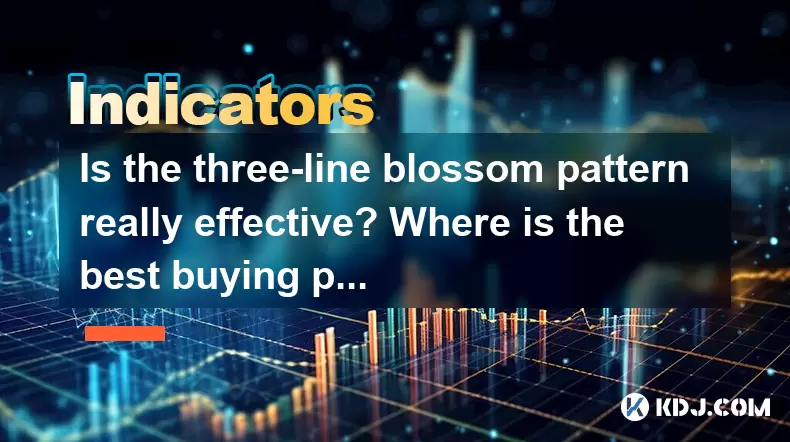
What is the Three-Line Blossom Pattern?
The three-line blossom pattern is a technical analysis formation observed in cryptocurrency price charts. It typically consists of three consecutive candlesticks that indicate a potential reversal from a downtrend to an uptrend. The pattern gets its name due to the visual resemblance to a blooming flower when charted correctly. Each line represents a candlestick with specific characteristics: the first is bearish, the second is indecisive (often a doji or spinning top), and the third is bullish.
Traders who follow candlestick patterns often look for this setup as a sign of shifting market sentiment. In the volatile world of cryptocurrencies like Bitcoin, Ethereum, and Solana, recognizing such patterns can be crucial for timing entries and exits.
How to Identify the Three-Line Blossom Pattern
Correct identification of the three-line blossom pattern is essential for it to be effective. Here’s how you can spot it:
- Look for a strong downtrend where sellers are clearly in control.
- The first candlestick should be a bearish one, continuing the downward momentum.
- The second candlestick shows market hesitation—it may close near its open, forming a doji or spinning top.
- The third candlestick must be a bullish engulfing bar that closes above the high of the previous candle.
This sequence indicates that selling pressure has weakened and buyers are stepping in. Traders often wait for confirmation from the next candle before taking action.
Is the Three-Line Blossom Pattern Reliable in Crypto Markets?
The effectiveness of the three-line blossom pattern largely depends on the context in which it appears. In highly liquid markets like Bitcoin or Ethereum, this pattern tends to be more reliable than in smaller altcoins with less volume.
However, no single candlestick pattern guarantees success. The three-line blossom pattern works best when combined with other indicators such as:
- Volume analysis to confirm buying interest
- Moving averages to assess trend strength
- Support and resistance levels to determine key price zones
In fast-moving crypto markets, false signals are common. Therefore, traders should always use risk management techniques like stop-loss orders and position sizing to protect capital.
Where Is the Best Buying Point Using This Pattern?
The ideal entry point after spotting the three-line blossom pattern is usually after the third candle closes. However, experienced traders often wait for a confirmation candle to form after the pattern completes.
Here’s how to time your entry effectively:
- Wait for the third candle to fully close as a bullish signal.
- Observe the next candle—if it continues higher and breaks above the high of the third candle, that’s a strong confirmation.
- Place a buy order slightly above the high of the third candle to avoid missing the move.
- Set a stop-loss just below the low of the second or third candle to limit downside risk.
Timing the exact moment to enter is critical in crypto trading, where prices can change rapidly. Some traders also combine this strategy with Fibonacci retracement levels to identify confluence zones.
Practical Steps to Trade the Three-Line Blossom Pattern
Trading the three-line blossom pattern requires discipline and precision. Here's a step-by-step guide:
- Open a charting platform like TradingView or Binance’s native tools.
- Select a timeframe—most traders use 1-hour or 4-hour charts for better accuracy.
- Zoom out to identify clear downtrends where the pattern might emerge.
- Scan for the three-candle sequence described earlier.
- Confirm with volume—the third candle should show increased volume compared to the second.
- Use a moving average like the 20-period EMA to filter trades in the direction of the broader trend.
- Enter once the third candle closes or wait for confirmation from the next bar.
- Always set a stop-loss and take-profit level based on your risk-reward ratio.
Using these steps can help reduce emotional trading and increase consistency.
Frequently Asked Questions (FAQs)
Q: Can the three-line blossom pattern appear in any cryptocurrency?
Yes, the three-line blossom pattern can appear in any cryptocurrency chart regardless of the asset. However, its reliability increases in major coins like Bitcoin and Ethereum due to higher liquidity and clearer price action.
Q: Does the three-line blossom pattern work on all timeframes?
While it can technically appear on all timeframes, the three-line blossom pattern is most effective on higher timeframes such as 1-hour, 4-hour, and daily charts. Lower timeframes like 5-minute or 15-minute charts tend to produce more false signals.
Q: Should I trade the three-line blossom pattern without confirmation?
It’s generally not advisable to trade the three-line blossom pattern without confirmation. Waiting for the next candle to close above the third candle’s high adds a layer of validation and reduces the chances of entering a false breakout.
Q: How does the three-line blossom compare to other candlestick patterns?
The three-line blossom pattern is similar to the morning star and hammer patterns but differs in structure and confirmation rules. It offers a more structured approach with defined candle sequences, making it easier to automate or backtest compared to some subjective patterns.
Disclaimer:info@kdj.com
The information provided is not trading advice. kdj.com does not assume any responsibility for any investments made based on the information provided in this article. Cryptocurrencies are highly volatile and it is highly recommended that you invest with caution after thorough research!
If you believe that the content used on this website infringes your copyright, please contact us immediately (info@kdj.com) and we will delete it promptly.
- Worldcoin, Identity, WLD Price: Decoding the NYC Crypto Buzz
- 2025-08-02 21:10:12
- Shiba Inu: Utility and Community Strength Drive Crypto's Evolution
- 2025-08-02 21:50:12
- Crypto Donations, Trump PAC, and Bitcoin: A New York Minute on Political Coin
- 2025-08-02 20:30:12
- Crypto Market Under Pressure: Bearish Momentum and Rising Volatility Take Hold
- 2025-08-02 20:30:12
- Crypto Market Carnage: Liquidations Soar as Ethereum and Bitcoin Take a Beating
- 2025-08-02 21:55:12
- DeFi Token Summer Gains: Is Mutuum Finance the Real Deal?
- 2025-08-02 18:30:12
Related knowledge

Is it possible to alter or remove data from a blockchain?
Aug 02,2025 at 03:42pm
Understanding the Immutable Nature of BlockchainBlockchain technology is fundamentally designed to ensure data integrity and transparency through its ...

How do I use a blockchain explorer to view transactions?
Aug 02,2025 at 10:01pm
Understanding What a Blockchain Explorer IsA blockchain explorer is a web-based tool that allows users to view all transactions recorded on a blockcha...
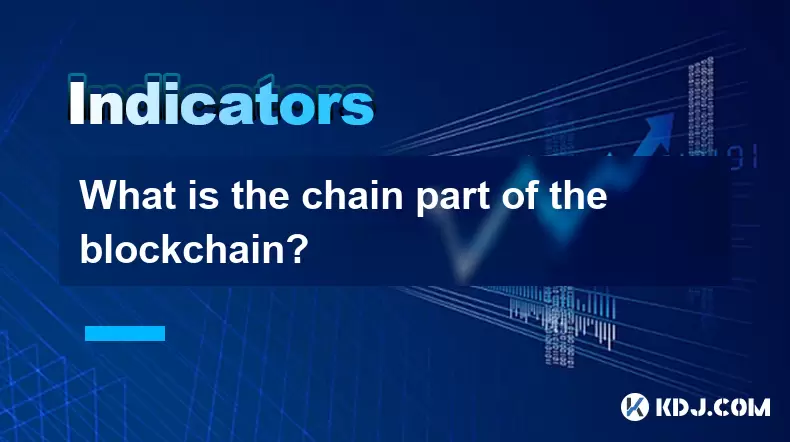
What is the chain part of the blockchain?
Aug 02,2025 at 09:29pm
Understanding the Concept of 'Chain' in BlockchainThe term 'chain' in blockchain refers to the sequential and immutable linkage of data blocks that fo...
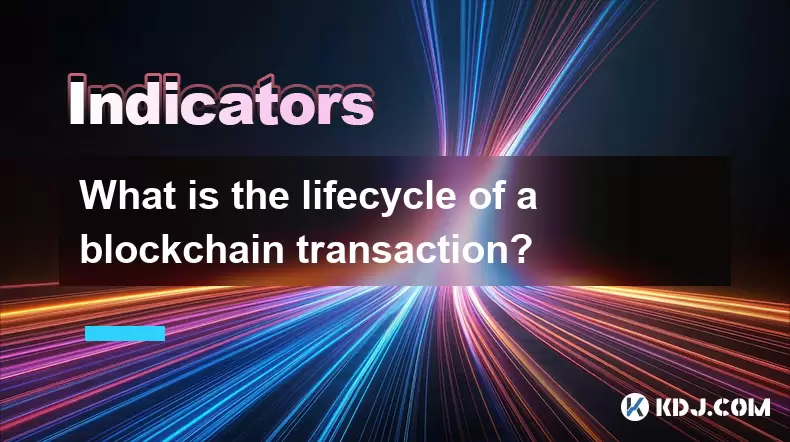
What is the lifecycle of a blockchain transaction?
Aug 01,2025 at 07:56pm
Initiation of a Blockchain TransactionA blockchain transaction begins when a user decides to transfer digital assets from one wallet to another. This ...
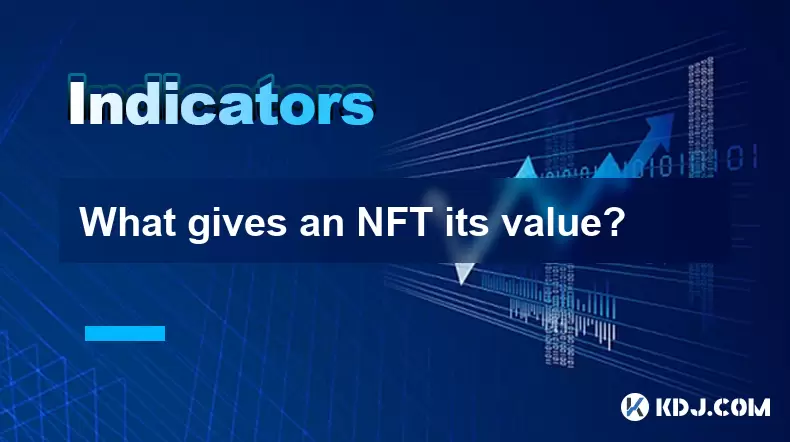
What gives an NFT its value?
Aug 02,2025 at 10:14pm
Understanding the Core Concept of NFTsA Non-Fungible Token (NFT) is a unique digital asset verified using blockchain technology. Unlike cryptocurrenci...
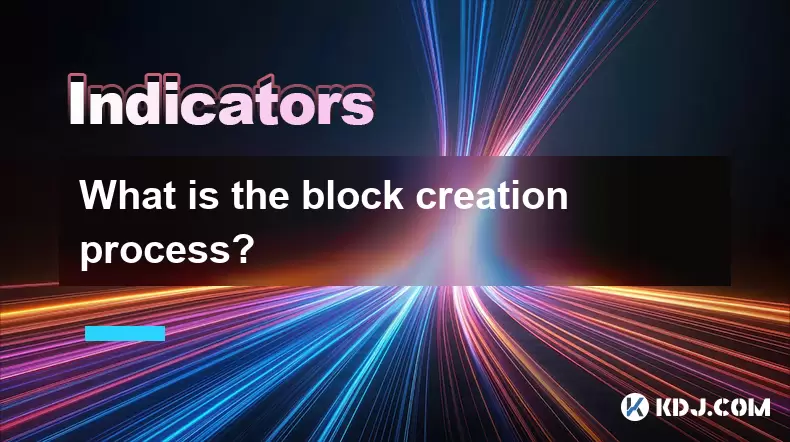
What is the block creation process?
Aug 02,2025 at 02:35am
Understanding the Block Creation Process in CryptocurrencyThe block creation process is a fundamental mechanism in blockchain networks that enables th...

Is it possible to alter or remove data from a blockchain?
Aug 02,2025 at 03:42pm
Understanding the Immutable Nature of BlockchainBlockchain technology is fundamentally designed to ensure data integrity and transparency through its ...

How do I use a blockchain explorer to view transactions?
Aug 02,2025 at 10:01pm
Understanding What a Blockchain Explorer IsA blockchain explorer is a web-based tool that allows users to view all transactions recorded on a blockcha...

What is the chain part of the blockchain?
Aug 02,2025 at 09:29pm
Understanding the Concept of 'Chain' in BlockchainThe term 'chain' in blockchain refers to the sequential and immutable linkage of data blocks that fo...

What is the lifecycle of a blockchain transaction?
Aug 01,2025 at 07:56pm
Initiation of a Blockchain TransactionA blockchain transaction begins when a user decides to transfer digital assets from one wallet to another. This ...

What gives an NFT its value?
Aug 02,2025 at 10:14pm
Understanding the Core Concept of NFTsA Non-Fungible Token (NFT) is a unique digital asset verified using blockchain technology. Unlike cryptocurrenci...

What is the block creation process?
Aug 02,2025 at 02:35am
Understanding the Block Creation Process in CryptocurrencyThe block creation process is a fundamental mechanism in blockchain networks that enables th...
See all articles

























































































